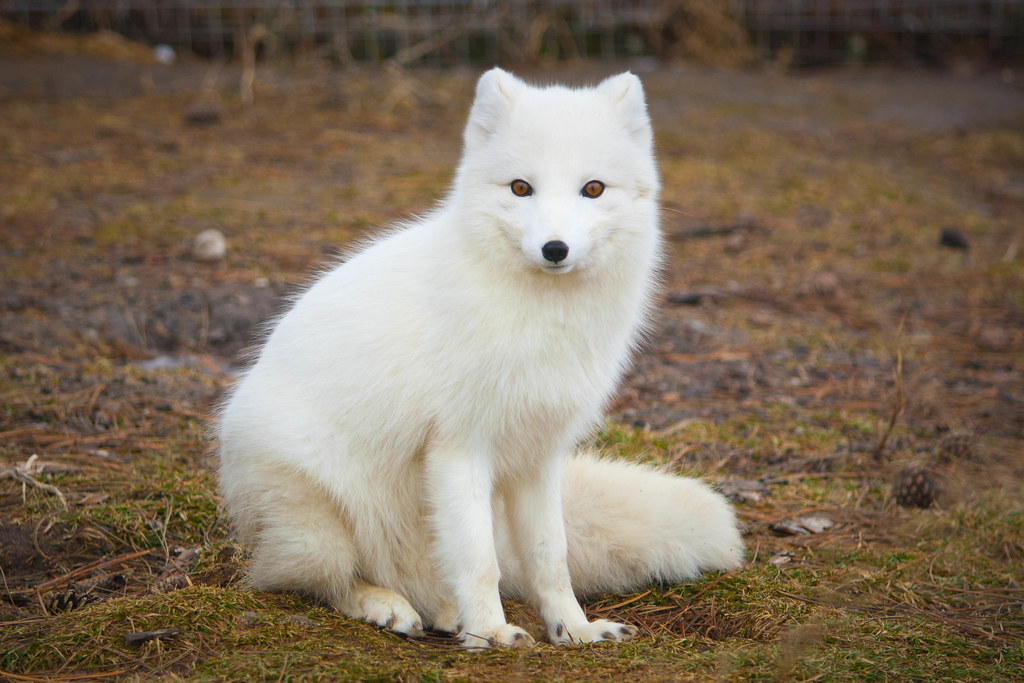The wind flows in swaths of cold air, blowing up strong walls of snow and ice into the white abyss that is the Arctic Circle. It’s a place where many organisms wouldn’t survive unless they were smart, sophisticated, and adapted to this environment. One animal in particular isn’t the biggest, the strongest, nor the fastest, but its ingenuity and intelligence make it one of the most interesting animals in this desert of coldness. Not only is their mental capability adapted to this environment, but their physical body is perfectly built for this unforgiving environment. Any guesses on what this animal could be? Many have tried, but oftentimes people don’t take into account one of the Arctic’s most fascinating creatures: The Arctic Fox.
This fascinating creature is often forgotten when talking about the fox family. Living in one of the most remote places in the world, the Arctic Circle, the Arctic fox has been adapted to its environment for generations. Classified as mammals, these little white creatures use their coat that was built for the cold environment of the Arctic. The coat wraps around them like a blanket and can help the fox survive during harsh winters. When the words “harsh winters” are mentioned, it shouldn’t be taken lightly. Temperatures in the Arctic Circle can get as low as -60 degrees Fahrenheit. However, the Arctic fox has no reason to worry, as it can survive temperatures as low as -58 degrees Fahrenheit all while their fascinating coat keeps the fox at a comfortable 104 degrees. Arctic foxes also have fur both in and around their feet, allowing them to hunt for days without getting too cold. The fur acts as a type of boot for the fox that enables them to be mobile and travel while keeping them warm while hunting. Additionally, the Arctic fox burrows underground and hibernates during certain seasons. Their heart rate and metabolism decrease, giving them the ability to survive the cold winter before they can go out and hunt again.
As for food, these foxes have a range of diets to help them survive in their environment. Known as omnivores, the Arctic fox prefers small rodents that come its way during the winter, however, when that isn’t possible, they are happy to adapt to their surroundings. They will eat leaves, berries, and even other animals’ feces. This is why we see many Arctic foxes trailing polar bears. The polar bears leave delicious leftovers that the Arctic fox is happy to chow down for its supper. This creates an interesting dynamic. The Arctic fox will not hunt or live in packs, therefore as it trails the polar bear, the bear feels no threat and is happy to oblige the fox’s tactical hunting strategy.
The Arctic fox is always concerned about protecting its species for future generations. Often it will breed once a year, producing a litter of up to 20 pups that come out darker-haired compared to the color Arctic foxes are usually associated with. Throughout the season, the Arctic fox’s coat will change colors. For example, many pups are born in June with a darker coat, rather than the pure white coat we see the foxes with during the winter. Then, as the season transitions to the harsh winters the Arctic is famous for, the fox’s coat becomes white to blend in with their new surroundings. The turnaround time for these dark-haired pups to live on their own is rather quick as well. There are typically around 40 days until the pup is expected to be able to hunt and learn on its own. Due to this, the population of this species is around several hundred thousand, and currently at no risk of extinction.
However, the lifespan of the Arctic fox in the wild is close to only three to six years. Although they only get to enjoy the wild for a short time, it’s amazing what these small mammals can do in the time they do have, and we should all appreciate it.




































